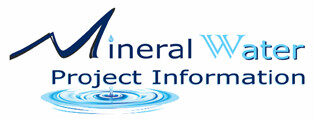Every Bottle of Water is NOT Mineral Water
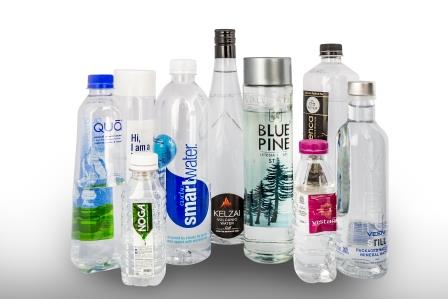
We generally call it “Mineral Water” , however, it is not usually “Mineral Water”. In every training, we ask the participants about what is their understanding of “Mineral Water”, though generally we call it that way. To cut a probable long story short, please understand that there is a central institution in India, called the B.I.S. which is the decision making power for all citizens of India, about which water you can drink (safely). I mean the real water, which quenches your thirst when you really feel thirsty. Till date , the “Flavoured Water” or “Alkaline Water” and many such categories are still not approved by the B.I.S. Let’s not talk about them, and see what the BIS has approved.
There are just 2 categories
Yes, there are only 2 categories as of date :-
- Packaged Drinking Water (Standard IS 14543)
- Packaged Natural Mineral Water (Standard IS 13428)
What is the difference in these ?
Taking it very simply, the Natural Mineral Water is the one which when used for drinking has all the hygienically good minerals & compositions in-built. The natural mineral water becomes “Packaged Natural Mineral Water” when it is Bottled or packed. Whereas the other one – the packaged drinking water is a modified water by physically removing the whole dissolved particals (#TDS) first (by #RO method ) and then making it suitable by adding the required dosages of useful compositions back.
#RO Method : Using Reverse Osmosis Filtration method, through which the finest of the impurities which are present in form of Totally Dissolved Solids (TDS). This TDS is measured in PPM Particals per Million or mg/l Miligrams per ltr. Hence when we say the water TDS is 200; it means 200 particals of solids in 1 million (10 lakh) particals
Mineral Water Project Information conducts training for people venturing into water business. Visit Youtube Chanel or Download Our App from Playstore
In Natural Mineral Water, Compositions are retained
The Natural Mineral Water Unlike the Packaged Drinking Water, retains the original composition intact. The #TDS mentioned above is not removed from that. Hence no RO Method is involved. Just have a look at the TDS mentioned on the some of the Packaged Natural Mineral Water :-
- Kelzai Volcanic Water …. 198- 248
- VEEN …….. 289
- Natural Springs (for Vistara) ……216 to 252
- Qua ….. 200-250
#TDS means the Total Dissolved Solids in the water.
# TDS of Packaged Drinking Water like Bisleri is usually below 100
What does the BIS say about this ?
While considering Natural Mineral Water, the BIS says that it should be in the range of 150-700 TDS. In other words, in no condition it should be lesser than 150 PPM.
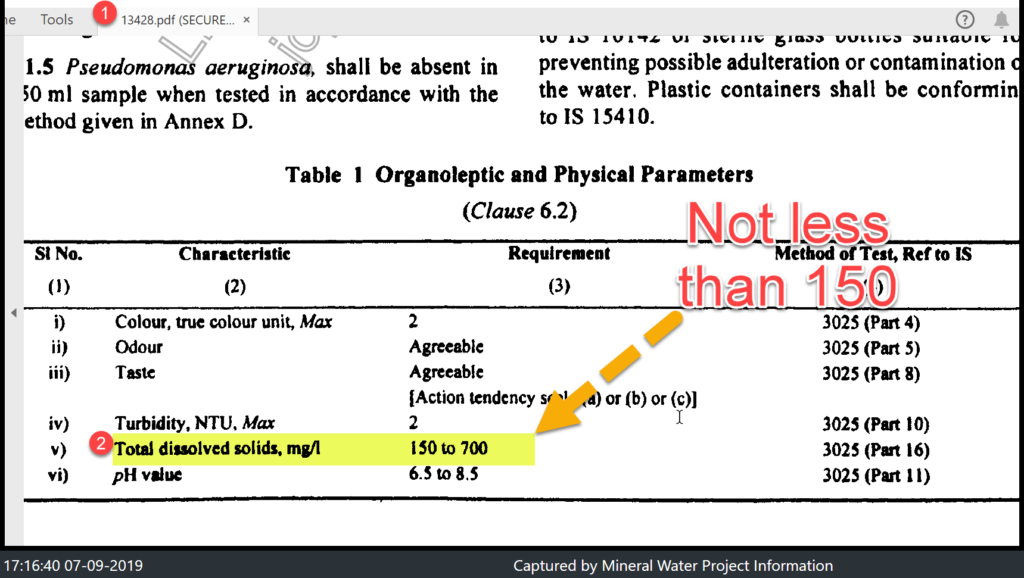
What is the range for Packaged Drinking Water as per the BIS ?
BIS has mentioned the range like “Maximum” 500, however, no Minimum has been mentioned.
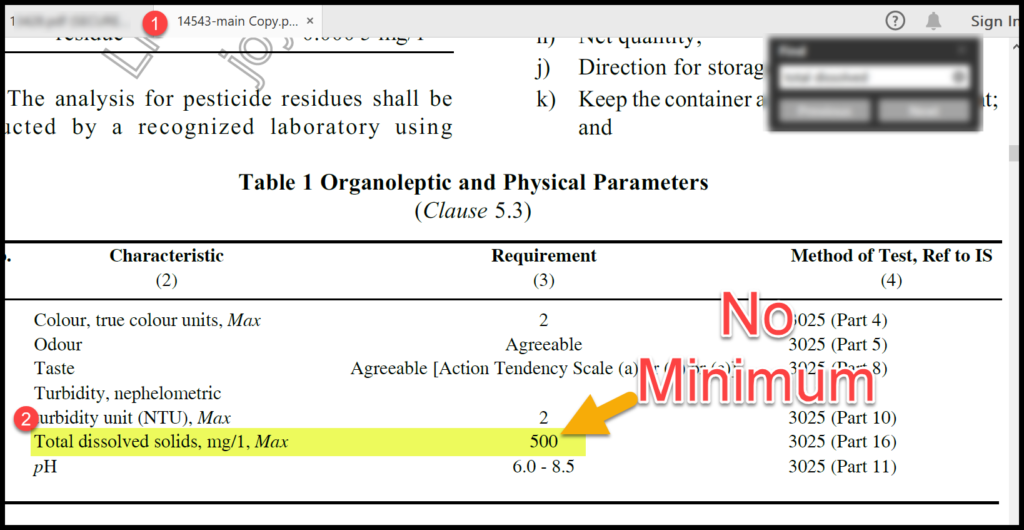
Why there is a difference ?
The Packaged Drinking Water is actually a newly made , modified water from its original drawn (Raw Water), it can have the exact composition. However, in the Natural Mineral Water, we are not removing the Dissolved particals, in a belief that they are in exact proportion as per described, no matter the TDS is more. Rather, it is observed in these waters that these properties play their part at a minimum TDS level, which is 150 minimum.
What are some other Parameters ?
Calcium & Magnesium
Every Brand had mentioned this on its label about the quantities present :-
Calcium :-
- Kelzai : 32-36 mg
- Blue Pine : 3.6
- Veen : 48.38 mg
- Natural Springs : 31-51 mg
- Qua : Less than 60 mg
Magnesium :-
- Kelzai : 3.16 mg
- Blue Pine : 1.4
- Veen : 24 mg
- Natural Springs : 4.61-7.8 mg
- Qua : Less than 15 mg
Permissible Range by the BIS :
For Calcium upto 100 mg/ltr , for Magnesium it’s 50 mg/ltr
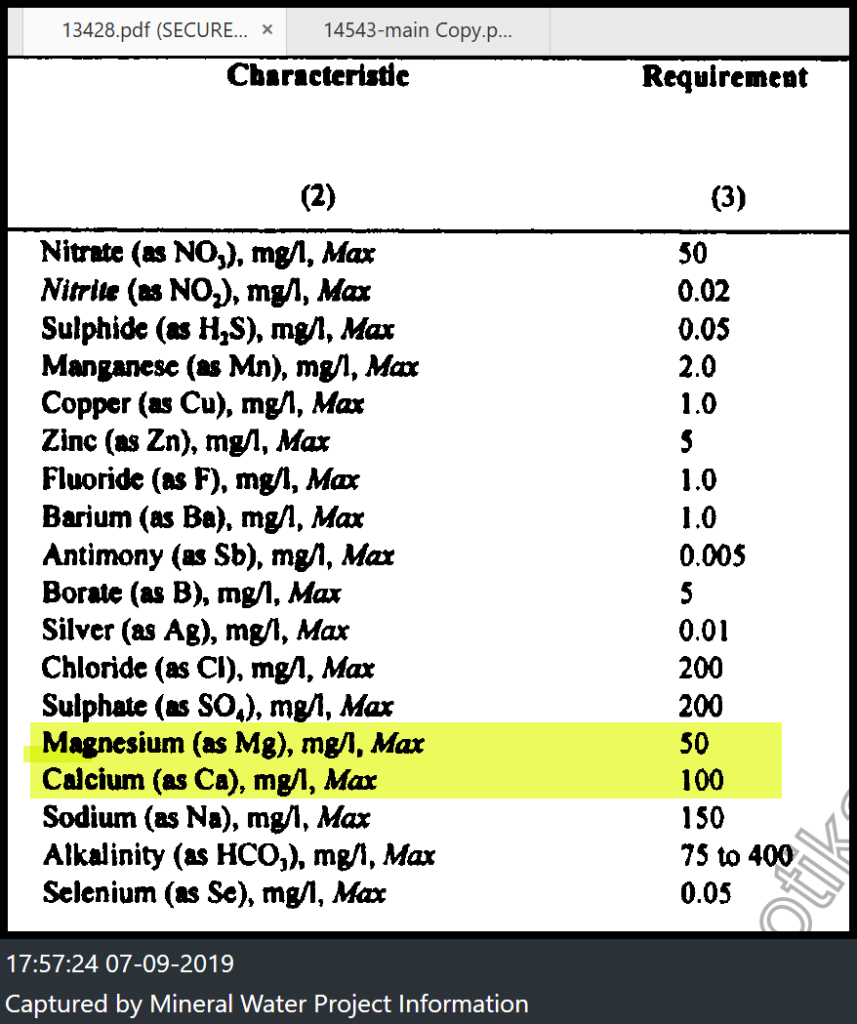
From the above data, we can easily notice that “Veen” has more percentage of Calcium & Magnesium in it. It is in permissible range. As per a post on Medical News Today Calcium as we all know is vital for Bone Health, if present more, also needs Magnesium to absorb that. The presence of both of these Minerals are extremely beneficial to our body. The Veen Website clearly claims the advantages , that they are naturally present in the water.
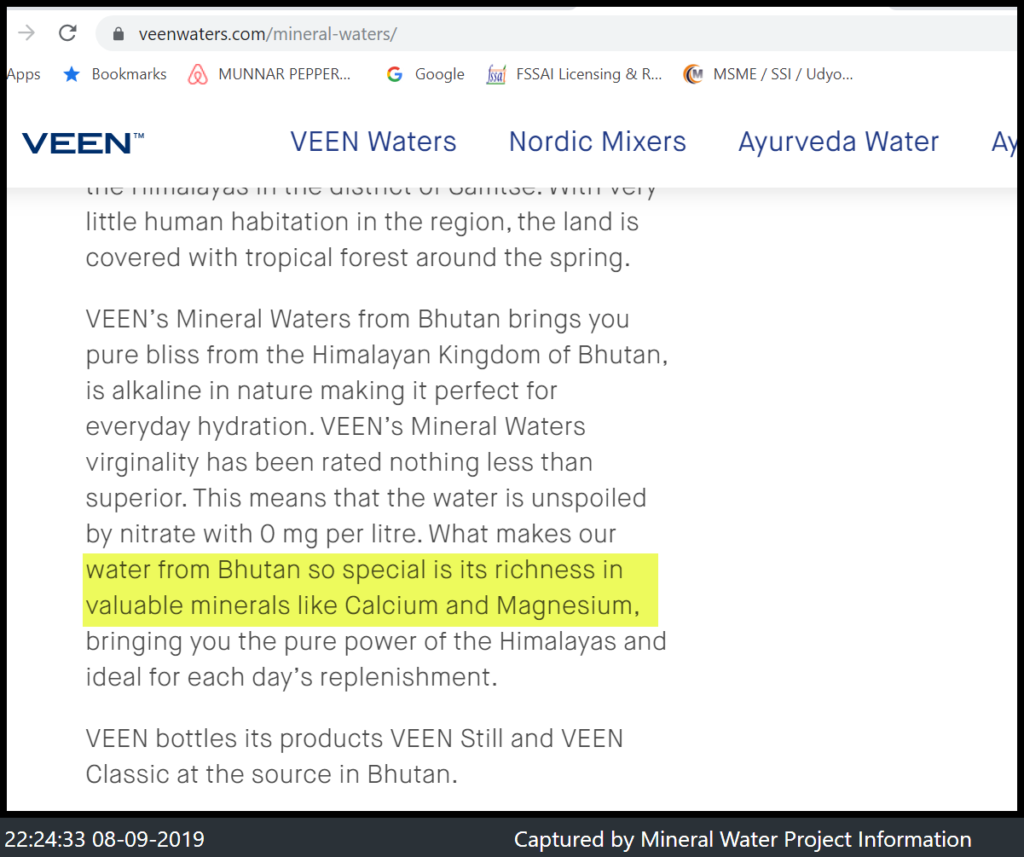
But why these Mineral Waters are so expensive ?
Look at the Price it’s sold at ..
| Brand | Qty | Packaged In | Price Rs |
| Veen | 330 ml | Glass Bottle | 200/- |
| Qua | 500 ml | PET Bottle | 65/- |
| Kelzai | 500 ml | PET Bottle | 65/- |
| Kelzai | 750 ml | Glass Bottle | 375/- |
Water, if not packed, and used as it is, without any treatment except the minor ones like physical filtration, will not be expensive at all. Hence if you consume these all waters at its source (e.g. Himalayas), it would be almost free. However, when it is commercially bottled, it will attract all the norms to be standardised as per the B.I.S. standards, which more or less implements the Codex practices. Codex is collection of all food related standards created across the world.
But what makes them so expensive ?
Reason no.1 : It is not available everywhere
Right or wrong, scarcity of anything makes the thing more valuable. As the Water from Himalayas is not available anywhere in India, it makes that unique. Of course, when Branded in a proper way.
Reason no.2 : The Distribution Cost
Unlike the Packaged Drinking Water, which can be produced anywhere, the Natural Mineral Water is produced at just the very location; hence taking the bottled water to all places is a cost.
Reason no.3 : Protection of Source
In Natural Mineral Water; the SOURCE from where it is obtained becomes the single most valuable component. And the protection of the same, to save the same from any manual intervention becomes a very huge task, resulting into incurring costs at various locations from the point of source till the point of availability.
Reason no.4 : Quality Control Cost
As the source for this water is natural, the impurities besides the Total Dissolved Minerals can be a parameter to be monitored on a continuous basis. This needs sampling, re sampling, Q.C. at labs, a more regular & engaged task, compared to that of the Packaged Drinking Water. This adds up to the cost to a great extent.
Reason no.5 : Branding & Marketing Cost
The market for this water is surely not the one like for Packaged Drinking Water. It’s little different, an “Up”market if you wish to call it. Obviously the strategies also differ. The placement, marketing, influencers also vary from Market to Market. While camels are ok for a Bisleri Campaign; a film star Radhika Apte does the Smart Water Campaigns, and a Water sommelier like Ganesh Iyer is marketing Veen. This is surely a cost.
Summary
Market for Natural Mineral Water is Different
Yes, it is different, however, it’s emerging. If you stay in hilly areas, like the western ghats in India, it’s quite unexplored.
You need to apply a different approach
To make money with the Natural Mineral Water, you will need to apply a totally different approach, as the rewards will be huge.
